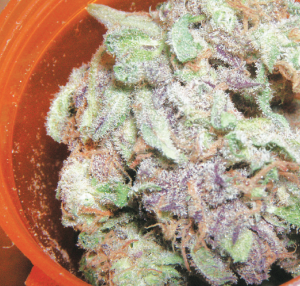With the increasing cost of healthcare and the prevalence of chronic disease in the United States, it’s really no surprise that many people have decided to take their health into their own hands and look for better alternatives to modern Western medicine. Science has proven that cannabis is an excellent option; it’s natural, effective and has few adverse or severe side effects. That’s a big contrast to the synthetic chemicals used by pharmaceuticals that can have some very severe adverse (sometimes permanently damaging or fatal) side effects. This includes long-term effects that we are not able to assess yet, especially considering pharmaceuticals were only introduced to humans less than 200 years ago, whereas cannabis has been documented as being cultivated by humans since 4000 BCE.
“It wasn’t marijuana that got prohibited, it was the truth about history.” — Dr. Tod Mikuriya
For thousands of years cannabis has been successfully used as medicine. Even though it is federally illegal in America at the moment, it wasn’t always and there are mountains of historical evidence that vouch for its medicinal value. Between 1830 and 1841, English physician William Brooke O’Shaughnessy lived in India, observed the use of cannabis extracts as medicine, and worked in the hospitals of Calcutta and began successfully treating patients for rheumatism, hydrophobia, cholera, tetanus and epilepsy. When he returned to England in 1841, he brought home cannabis seeds and recipes for others to use. Even as far back as 2300 BCE in China, the emperor-physician Shen Nung referred to cannabis as one of the “Supreme Elixirs of Immortality.”
Currently cannabis is known to treat a host of ailments, including cancer, epilepsy/seizures, multiple sclerosis, Crohn’s disease, Parkinson’s disease, Huntington’s disease, endocrine disorders, arthritis, insomnia, migraines, IBS, nausea, chronic pain, inflammation, glaucoma, neurodegeneation, fibromyalgia, depression, PTSD, anorexia nervosa, anxiety and obsessive compulsive disorder. Many of the phamaceuticals used to treat these conditions are known to have severe short-term side effects and largely unknown long-term effects.
The risk of addiction and dependency on certain types of pharmaceuticals is another reason folks are looking for alternatives. Cannabis can be used in place of some of the most dangerously addictive drugs currently on the market, including opiates and benzodiazepines. The rising opioid epidemic in America certainly cannot be ignored and neither can any of the aspects of its solution. Not only is cannabis non-addictive, it can ease the symptoms of withdrawal by reducing nausea and pain while relieving insomnia.
The big pharmaceutical companies and the health insurance companies aren’t going to stop trying to sell their wares any time soon, so for now it’s up to individuals to explore all of the options in order to find out what falls in line with their philosophies, lifestyles and values. Unfortunately, the classification of cannabis as a Schedule 1 drug blocks any and all Federal funding for research. For now we can just be grateful that 33 states have been able to give their residents the option to access cannabis for alternative healthcare.
More Posts by The Author:
Smokescreens: Debunking myths surrounding cannabis
Nature’s Medicine Cabinet: Fight back against colds with cannabis
Lighter, Cannabis… Action! Toking with the stars
This Way Out: Cannabis as an exit drug from risky pharmaceuticals
She Cured My Glaucoma with Science!: We know medical marijuana works, but how?




